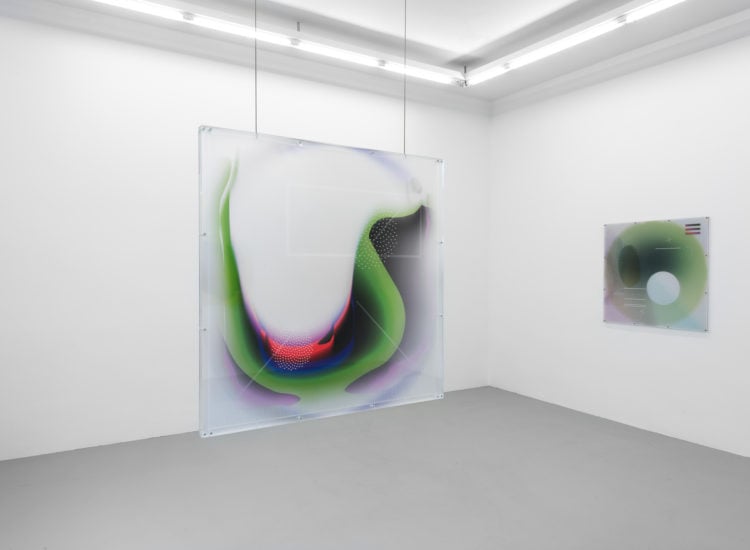Better explained with terms used in genetics and coding rather than those typically used to describe art, the Dutch artist Harm van den Dorpel is currently showing his second exhibition at Berlin’s Neumeister Bar-Am, titled “Death Imitates Language.”
The works on display are part of an ongoing project, currently developing with the help of an artificial intelligence software designed by the artist. A “population” of 2D images is being continuously “bred,” expanding on and further abstracting a number of elements that the artist first sourced from 20th-century collage works.
The Berlin-based artist turned these elements into “organs,” and encoded them into “binary chromosomes.” Writing a “genetic algorithm,” he created a software that allows the images to “mate” with each other, making new images that take on characteristics of both “parents.”
The breeding process, watched over and tweaked by the artist according to his own aesthetic preferences, has birthed hundreds of images so far. Van den Dorpel himself assumes the role of a breeder, intervening in the algorithm to choose which of the images should mate with each other, creating families and generations of related images.
When he is satisfied with a result, he can “freeze” the image. Five of these frozen images have been turned into unique wall objects, made of multi-layered UV prints and plexiglass. Alongside them are displayed two works from 2014 that precede this process, as well as a monitor where visitors can see the population as it evolves (the population can also be accessed online).
The works can, however, be described in formal terms, and even praised for their aesthetic qualities. One, Acura Bigboobe Romcops (each work’s title, presumably, is an amalgam of its ancestors) hangs in the center of the gallery, with layers of radioactive green, blue, and red oozing over lighter washes of purple and blue, for the most part with sharp, cutout-like edges. It is blank in the center, resembling a large, soft swipe of a photoshop eraser tool. Two circles of white dot patterns, one smaller and more densely packed, decorate the surface.
It makes one wonder what, exactly, the origins of the work were: Dada collages? Picassos? In any case, it represents in a very literal sense the logical lineage of contemporary 2D images as derived from their Modern predecessors.
Harm van den Dorpel, “Death Imitates Language” is on view at Neumeister Bar-Am in Berlin until February 4, 2017.
